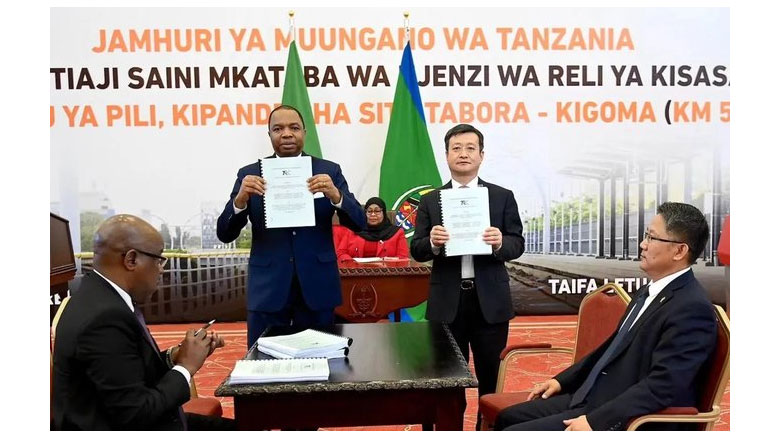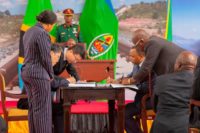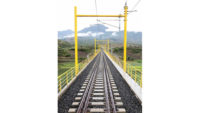A Chinese joint venture has won a second contract in under three years to construct the sixth phase and final portion of a 2,561-km standard gauge railway (SGR) line in East Africa over the next four years.
China Civil Engineering Construction Corporation and China Railway Construction Corporation will build the 506 km line connecting the towns of Tabora and Kigoma. The $2.2 billion project is comprised of 411 km of main line, 95 km of branch lines, 10 railway stations and two large freight yards.
Denmark-based engineer COWI A/S was previously picked as preferred designer of the Tabora-Kigoma phase of the SGR line project. As in the previous five phases, the Tabora-Kigoma phase is being constructed alongside Tanzania’s existing 2,725.5-km meter-gauge railway track, reducing the need to establish right-of-way.
Contracts for five earlier phases of the SGR line have been awarded to Turkish and Portuguese contractors. The Tanzanian SGR line will link landlocked countries of Rwanda, Burundi and Democratic Republic of Congo (DRC) to the Indian Ocean port city of Dar es Salaam. The SGR line, once fully operational, would reduce cargo transportation costs between Dar es Salaam and the landlocked countries from $6,000 per metric ton to $4,000 per metric ton. Transportation time is also expected to drop drastically from 30 days to 30 hours by 2027.
In January 2021 China Civil Engineering Construction Corporation and China Railway Construction Corporation signed another contract for the construction of the fifth phase of the SGR line, approximately 249-km long, connecting the town of Isaka to Mwanza, the second-largest city in Tanzania. The contract award coincided with Tanzania’s securing a $1.32 billion loan to finance this phase of the SGR line.
The SGR line is designed with a lifespan of 100 years, and can handle axle loads of 35 metric tons and a design speed of 160 KPH (99 MPH) for passenger trains and 120 KPH (74 MPH) for freight trains. Initially, 24 trains, with maximum length of 2 km, will travel the 2,561-km electrified SGR line.
The SGR will use UIC 60-type rail on pre-stressed, mono-block concrete. According to the Tanzania Railway Corporation, the SGR line’s “horizontal curves will be designed to account for the relatively higher speed of the new train.”
The SGR line is being laid with 2.6-m-long sleepers that are spaced 600-mm apart. The is also utilizing 2.5 cu meters of ballast for every meter laid. The ballast’s thickness and shoulder width has been designed at maximum of 300 mm and 400 mm respectively.
The rails will be fastened using the elastic rail fastening-anti vandal system while the track will have continuously welded joined using the flush-butt method.
“This Tabora-Kigoma railway will open up Tanzania and connect it with Democratic Republic of Congo where there is a lot of cargo that needs to be transported through our [Dar es Salaam] port,” said Tanzania’s President Samia Suluhu Hassan during the signing of the contract in December 2022.
Tanzania is expected to finance the project through equity and commercial loans. With the contract award for the Tabora-Kigoma section, the total investment in the entire SGR line project in Tanzania has now risen to $10.4 billion.
“I know our critics blame us for taking up these loans, but they must understand that a better infrastructure is key to driving growth in our country and making Tanzania competitive at the regional level,” said President Samia Suluhu Hassan in December 2022.




Post a comment to this article
Report Abusive Comment